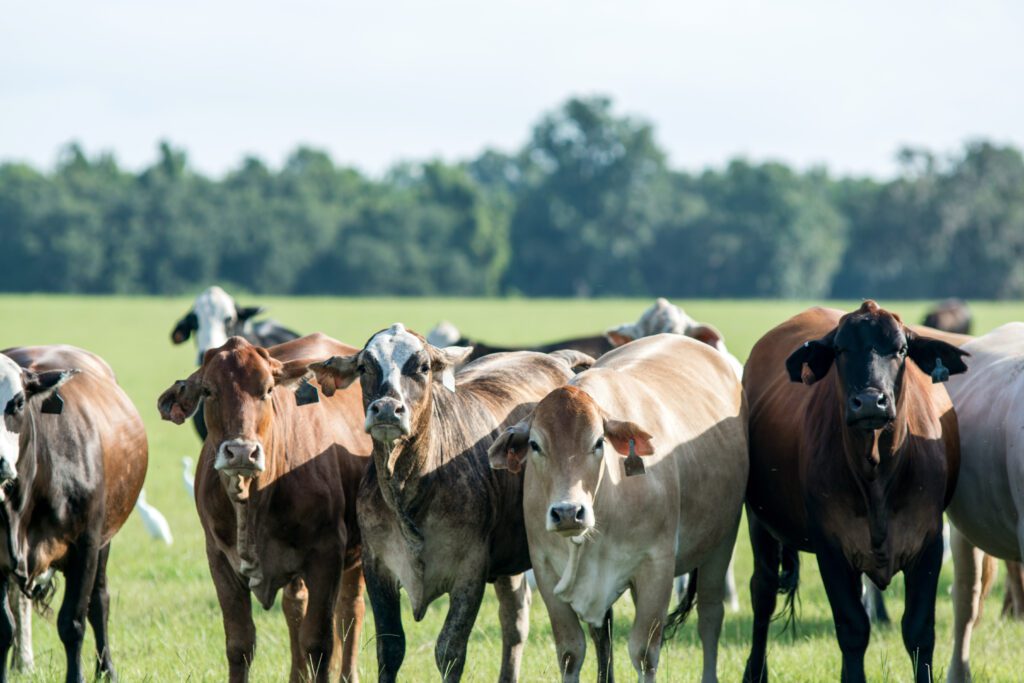Polk County Ranchers See Cattle Market In Their Favor
by REBEKAH PIERCE
According to the USDA, the national cattle inventory is at the lowest it’s been in 64 years.
Currently, beef producers are experiencing what it truly means to be in a bull market (the irony of that particular verbiage certainly not lost on many ranchers), and those bullish sentiments are having a ripple effect right here in Central Florida, too.
Cary Lightsey operates Lightsey Cattle Company, a sixth-generation cattle ranch with the seventh and eighth generations up-and-coming on the ranch. According to Lightsey, they still do things “the old-fashioned way” on their ranch, with big pastures, a crew on horseback, and dogs.
“We are a pioneer family,” he explains. “Our family owns the land. We don’t have the overhead of having to buy a ranch. I’d hate to have to do that now and make a good living.”
To his point, ranchers and farmers around the state are feeling the squeeze of high input costs.
“A lot of our inputs are at the greatest level and so are our expenses, too,” says Dusty Holley, Director of Field Services for the Florida Cattlemen’s Association. The USDA estimates that these are up 16% since 2021.
DEMAND & SUPPLY
Both Holley and Lightsey were quick to address the very prominent silver lining of the market: record-breaking high prices. In Polk County, about 99% of all cattle ranches are cow-calf operations, Holley says. As a result of droughts in the West and Midwest, the national cattle inventory is at a record low, but the demand for beef products has remained high.
“The cattle business today is by far the best it’s ever been, and it keeps getting better every week,” Lightsey exclaims. “I think we’re riding a good wave, and we need to enjoy it. It’s a good time to upgrade your cattle, go ahead and do things you’ve always wanted to do with your ranch. What goes up must come down, but I think this one will last a little longer.”
Holley was careful to note the cyclical nature of the industry, “Historically, there’s ups and there’s downs. There’s a down time coming. That will probably happen as herds in other parts of the country start to rebuild. As you can imagine, when times get tough in the cattle business, as they do in any industry, some producers choose that time to completely go out of business or minimize and scale down.”
And while ranchers are experiencing a bout of good fortune in Polk County in particular, Holley also emphasizes that conditions are harder for other farmers, namely those who specialize in raising stockers and feeders.
“When you step outside of just the cow-calf sector, it’s a pretty tough time for people buying those expensive cattle to make money. Those guys get squeezed pretty hard.”
HIGHER PRICES, LESS LAND
The biggest threat facing Polk County’s cattle producers isn’t currently the cattle market, but can instead be summed up in two categories, according to Dr. LuJean Waters, President of the Polk County Cattlemen’s Association: inflation and loss of ranchland.
“Inflation on goods and services has led to skyrocketing overhead costs for local ranchers: fertilizer, hay, feed, supplements, medications, etc., have all tripled in price in the last two years,” she explains. “Although we’re currently seeing cattle prices reaching a decade high, this is only parallel to the exponential increase in overhead cost for ranchers.”
She also expressed concern over the loss of rural ranch lands to developers. Lightsey shares this concern, and in the 1980s, preemptively put 92% of his ranch into conservation easements so that it must stay in agriculture in the future and cannot be developed. He fully believes that aspiring cattle producers can still succeed.
“I would love to see young people [in agriculture] and a lot of them want to be in it.”
He points to many of Central Florida’s former orange groves, having succumbed to citrus greening, as an opportunity for these farmers to break into the industry.
“I’d love to see them clear that land and put some good grasses on it to raise cattle,” he muses.
Holley adds, “All in all, what we try to work for is that over time, everybody in the industry remains economically sustainable. The only way we can continue to be environmentally sustainable is by being economically sustainable. If we can’t stay in business, we can’t provide all that green space, wildlife habitat, etc.” He encourages everyone, whether a large rancher, small rancher, or anyone else with an interest in Florida’s cattle industry, to get involved with organizations like the Florida Cattlemen’s Association.
Dr. Waters similarly recommends joining the Polk County Cattlemen’s Association. Despite all the challenges facing the industry, she says, “We have a solid foundation within our membership of families willing to put forth the time, effort, and dedication to fight for our community.”
Because no matter the challenges, and despite the ups and downs, Holley says, “Florida remains a great place to raise cattle, and raise a family.”

